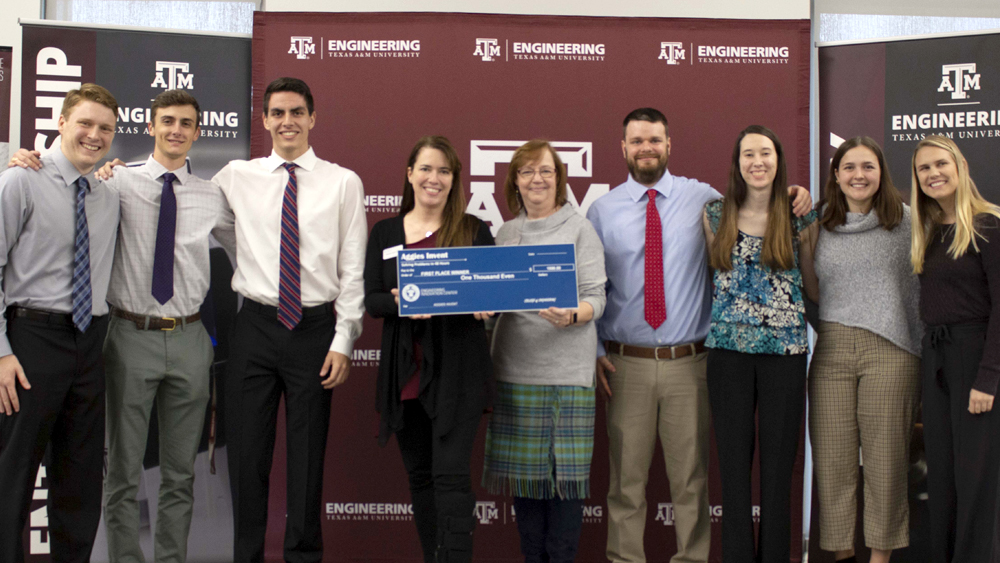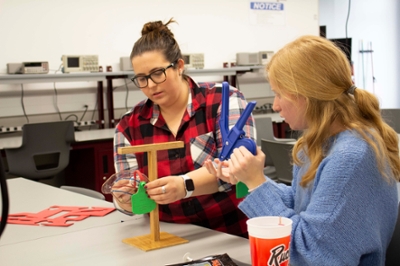
From tracking ill cows on a ranch to safely restraining animals after a surgery, students from Texas A&M University were given 48 hours to develop impactful solutions for the animal kingdom during Aggies Invent: VetMed.
The 36th Aggies Invent kicked off Jan. 10 and challenged eight teams of students with various academic backgrounds, ranging from engineering to animal science, to develop solutions to a variety of problems.
The winning team, Seabisket, developed a tube to safely and effectively deliver colic treating medication to horses. The tube is inserted into the horse’s nose and fed to the stomach.
“A really big challenge was being innovative about the solution because this a pretty simple, very common procedure,” said Diego Sol, aerospace engineering junior. “A lot of people have looked at trying to make it better and there haven’t been a whole lot of breakthroughs.”
There were two main innovations the team added to the project — a balloon that will read the pressure around the tube to determine if it has entered the trachea or the esophagus, and wires at the end of the tube that form an incomplete circuit.

“Stomach acid can conduct electricity,” said Peter Winsauer, biomedical engineering junior. “Once the tube is in the stomach acid, it will complete the circuit and turn on an LED outside the body that the technician can see.”
Teams are encouraged to include members with a variety of backgrounds to enhance the amount of shared knowledge. Ashley Saddler, biomedical sciences junior, noted that for Seabisket it was especially helpful with their prototype’s design.
“I would never have thought of the incomplete circuit, but (the biomedical sciences members) thought of the balloon. It was just a really nice mix of ideas and a constant flow of knowledge from different fields, which was really cool,” Saddler said.
Gayle Millard, a senior technical services veterinarian at Boehringer Ingelheim Animal Health based in San Antonio, was an industry representative and judge. She said events like Aggies Invent not only help students gain educational knowledge about working with people in different disciplines, they also have an innovative impact in preparing them for the working world.
“In the real world you’re going to work with people that come with all kinds of educational backgrounds and different perspectives and different objectives, and you have to work with them,” Millard said.

For some students, like first year vet student Chloe Bening, participating in Aggies Invent has adjusted their career goals.
“My eventual plan is to be a professor, but I really want to learn more about the engineering side of veterinary medicine,” Bening said. “If I can be a professor (I’d) teach an elective in the vet school about more ingenuity and engineering in the veterinary field, because there are a lot of veterinarians in industry that are not in private practice.”
Dr. Eleanor Green, dean of the School of Veterinary Medicine and Biomedical sciences, acted as a judge. She said students can take away much from the event, from gaining confidence in using their own skills to learning how to respect and leverage the talents of others.
“It also helps people understand that we have a lot of problems in our world and if we get the right people together, we can solve them and come up with something pretty quick,” Green said. “It’s amazing. I think every single one of these projects could be built upon.”
Other teams that placed were:
- Second Place: How’s My Cow
- Third Place: Under Pressure
- Honorable Mention: Padguard
The next intensive design experience is Invent for the Planet, where more than 40 student teams across the world will collaborate to address need statements that impact us all. The event runs Feb. 14-16, and registration ends on Feb. 3.